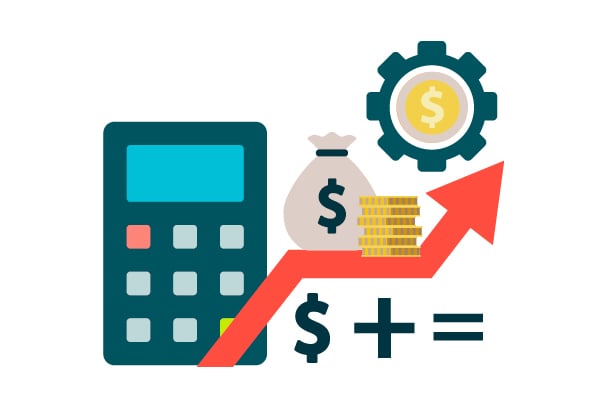Transition To Retirement
Transition to Retirement from age 60
Section Heading
A Transition to Retirement strategy can help you boost your super in the lead-up to retirement, giving you the chance to make the most of your final working years. It can also help you ease into retirement gradually, while keeping your income steady.
Over 60? Use our TTR strategy to make the most of your super
Think of Transition to Retirement (TTR) as a flexible bridge between working life and retirement. By opening a Super SA Income Stream account alongside your Triple S account, you can start accessing your super while you’re still working.
That means you can:- Work the same hours and give your super a boost, or
- Work less and keep your income steady.
Section Heading
Advantages of a TTR strategy with Super SA
Boost your super and maintain your income
Combine a TTR Income Stream with salary sacrifice and you could boost your super without reducing your take home pay.
Work less, but maintain your income
Reduce your work hours and supplement your take home pay from your super through a TTR Income Stream.
No annual cap on salary sacrifice contributions1
With Triple S, there’s no annual limit which means you can contribute a whole lot more as you approach retirement.
Flexible payments
Get your income payments when it suits you - fortnightly, monthly, quarterly, half-yearly, or yearly.
Keep your money working
The money you transfer from your Triple S account to your TTR Income Stream account stays invested.
Tax-free payments
From age 60, income payments from super are tax-free.
And it gets even better at age 65
When you meet a condition of release such as retiring or turning 65, your transition to retirement account automatically moves from the ‘transition phase’ to the ‘retirement phase’. This change happens even if you’re still working, and it brings with it some added benefits.
- Investment earnings become tax-free
- You can take lump sum payments whenever you like
- The 10% annual payment limit is lifted, giving you freedom to withdraw more if you choose.
Section Heading
How does TTR work in real life?
Explore our case studies to see the different ways members can use this strategy to their advantage.
Meet Kyle, he’s giving his super a mega-boost before retirement.
Kyle is 60 and earns $100,000 a year working full-time. He has $450,000 in his Triple S account. He wants to give his super a final boost to put him in good stead by the time he’s ready to retire at age 65.
His goal:
Boost his super without reducing his take-home pay.
Meet Lisa, she’s working less but keeping most of her income
Lisa is 60 and earns $100,000 a year working full-time. She loves her job but wants more time with her grandchildren. Cutting back her hours would mean a drop in income, and that worries her. She has $400,000 in her Triple S account.
Her goal:
Work fewer days without losing too much take-home pay.
Meet Sharon, she’s paying down debt to ease financial stress
Sharon is 60 and earns $100,000 a year working full-time. She has $500,000 in her Triple S account. Her biggest worry is her $200,000 mortgage, and she’s determined to pay it down before retiring.
Her goal:
Use her super to reduce mortgage stress and feel more confident about retirement.
Section Heading
How to set up a TTR
- You open a Super SA Income Stream account and transfer at least $30,000 from your Triple S account.
- You then draw regular income payments from the Income Stream account directly into your bank account.
- If you’ve cut back on work, this helps top up your take-home pay.
- If you’re still working full-time, it can increase your overall income, since you’re earning your regular salary and drawing from your super.
- You continue working and receiving employer continues into your Triple S account.
- If you’re using TTR to boost your super, you can make salary sacrifice contributions into your Triple S account.
Eligibility
To start a TTR strategy, you must:
-
- Be aged 60 or over
- Have a Triple S account with a balance of at least $36,500
- Roll at least $30,000 into a Super SA Income Stream
- Keep a minimum of $6,500 in your Triple S account.
Things to consider
- There are rules for how much you can draw from your Income Stream account balance each financial year. The minimum is 4% and the maximum is 10%.
- Accessing your super through a TTR strategy may affect the level of Centrelink benefits you (and your partner) are eligible for.
- Drawing on your super now means there may be less available when you retire.
- If your priority is to reduce your work hours, you might want to explore other options available through your employer, such as long service leave or flexible work arrangements, before accessing your super.
- TTR may not be suited to everyone. It’s a good idea to get financial advice when deciding if this strategy is right for you.
Section Heading
Tools and support
Section Heading
Frequently asked questions
-
How do I start a TTR?
If you would like to start a TTR, you should first read the TTR section in the Triple S Reference Guide for details of eligibility criteria.
You then need to apply for an Income Stream account. Instructions for how to do this are available here: Open an Income Stream.
-
Can I start a TTR strategy for my spouse?
Your spouse may be able to open their own Income Stream spouse account for TTR.
To do this, the following must apply:
- You're a member of an eligible Super SA scheme (like Triple S )
- Your spouse is aged 60 or over
- They roll in at least $30,000 from another fund to Super SA.
Before making any decisions, we recommend getting professional financial advice to help you decide if a TTR is right for you or your spouse.
If you’d like to talk it through, give our Member Services team a call on 1300 369 315.
-
Do I need to open a Super SA Income Stream to start a TTR?
Yes, to start a Transition to Retirement (TTR) strategy you’ll need to open an Income Stream.
This type of account gives you flexible, tax-effective access to your super while complying with superannuation rules. While it can’t receive employer contributions, the money in the account stays invested, helping your savings last longer as you move into full retirement.
-
Can I transfer more money into my Income Stream account?
Once an Income Stream account has been opened, you can’t contribute or transfer more money into it. However, you can consider opening a new Income Stream account.
-
Can I start a TTR with funds from another super fund?If you have a Triple S, Super SA Select, or Flexible Rollover Product account with Super SA, you can transfer your super from another fund into one of these accounts. Once the transfer is complete, you can use those funds to start your TTR Income Stream.




